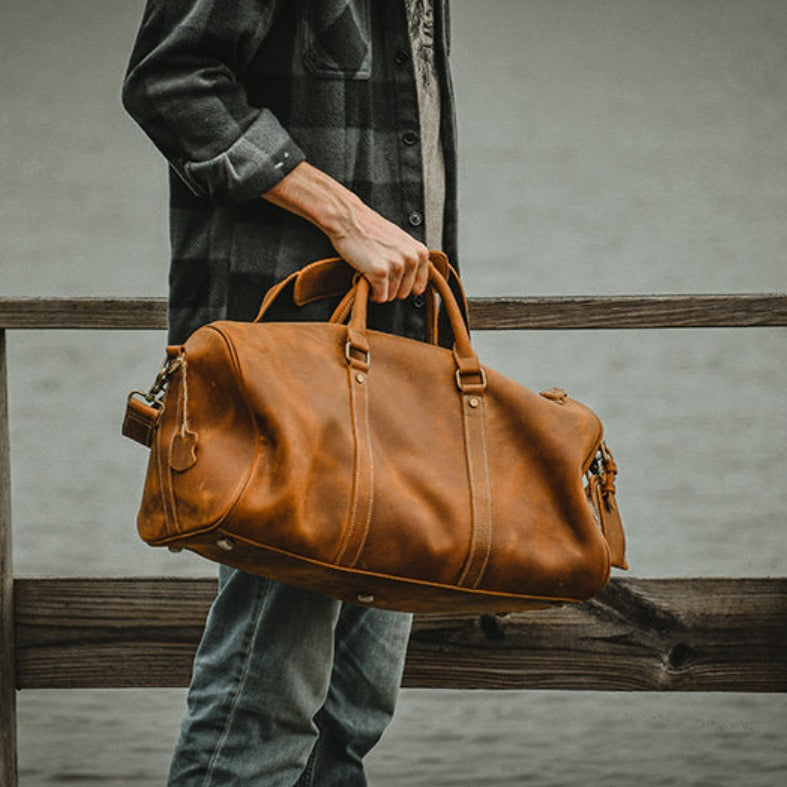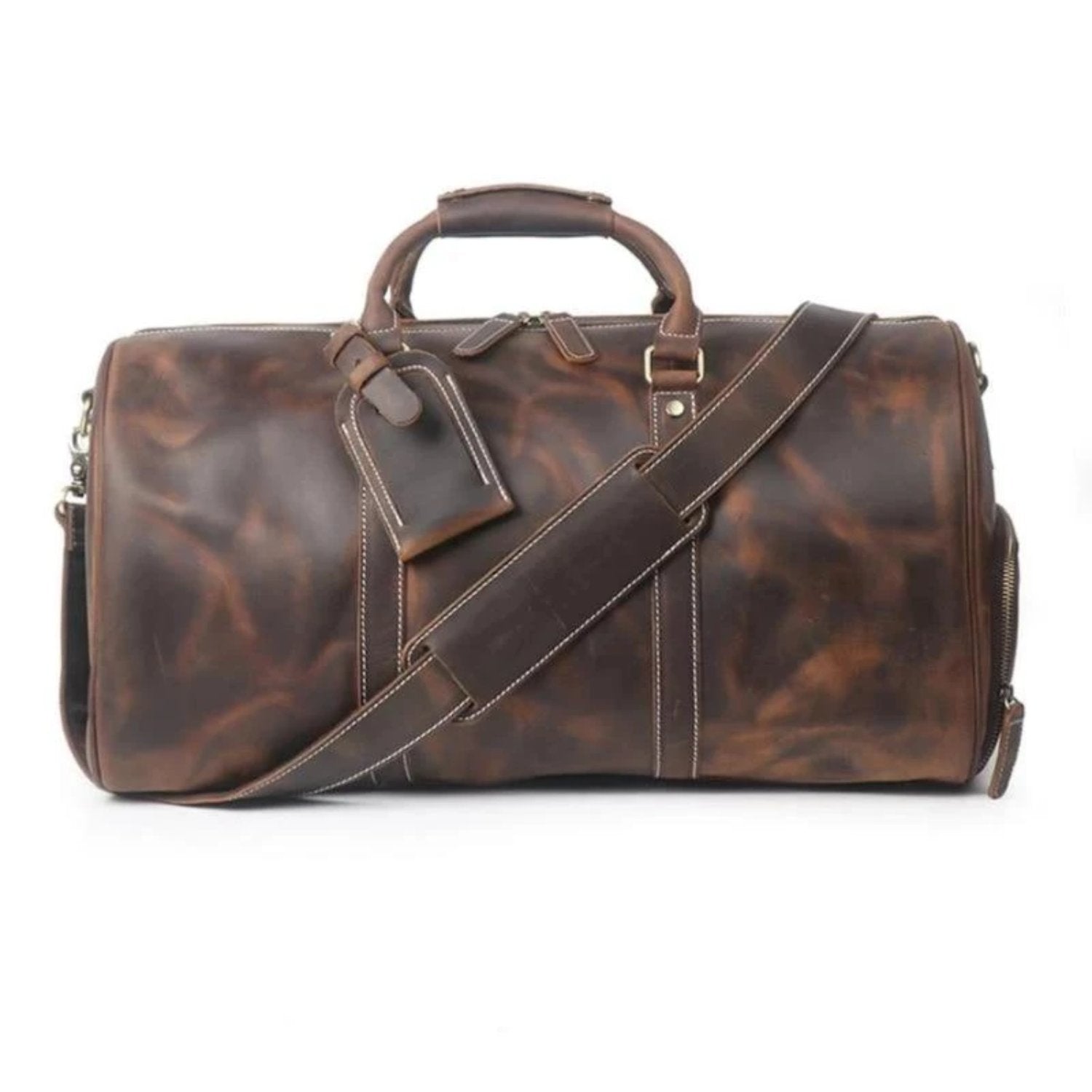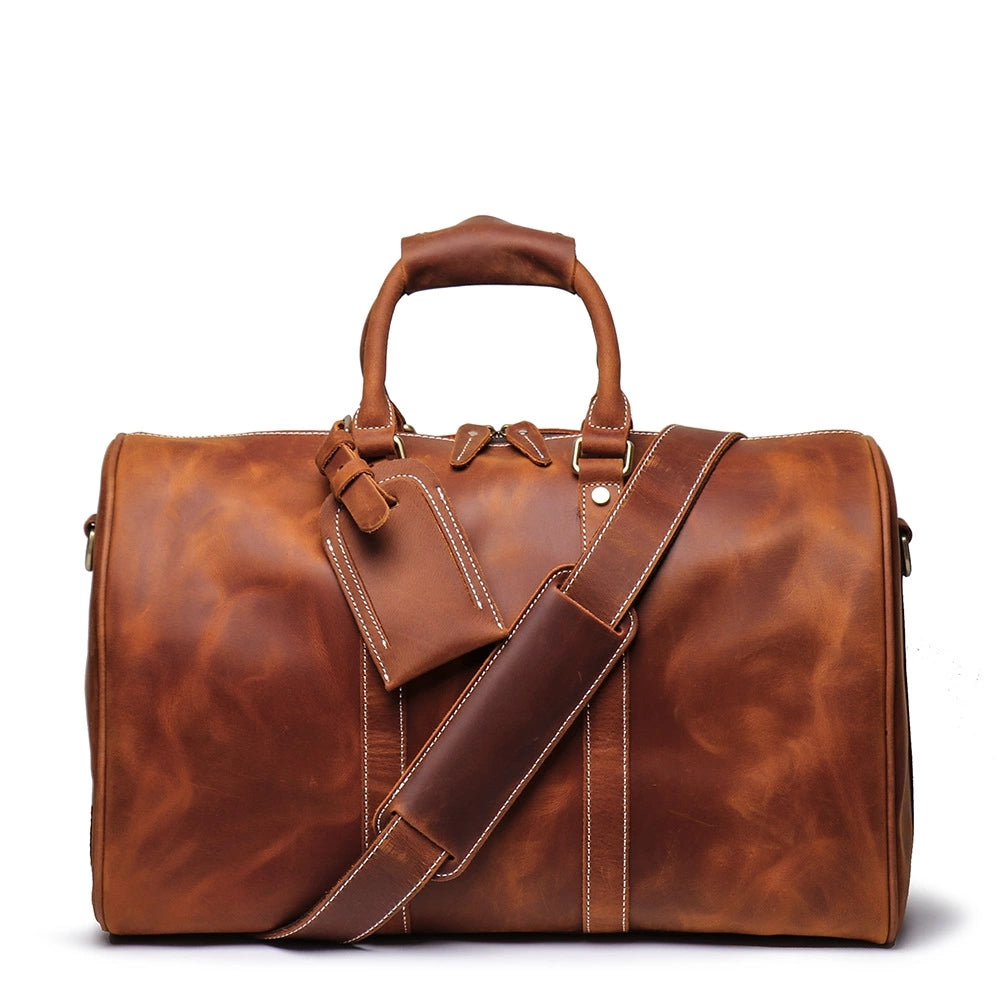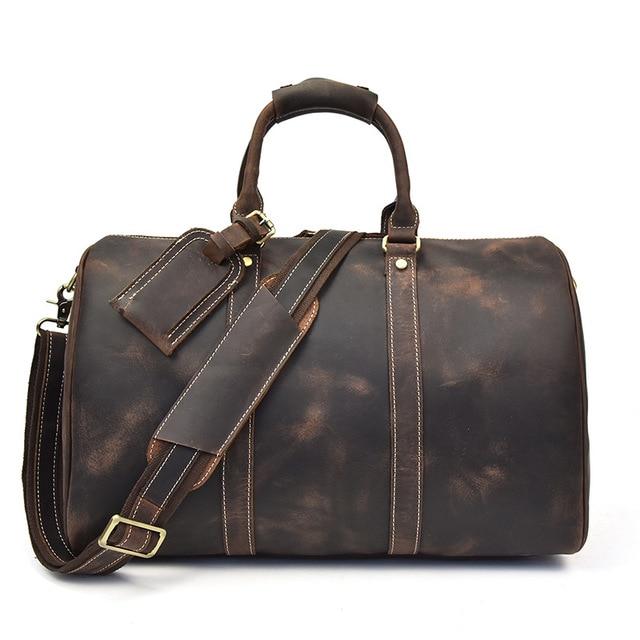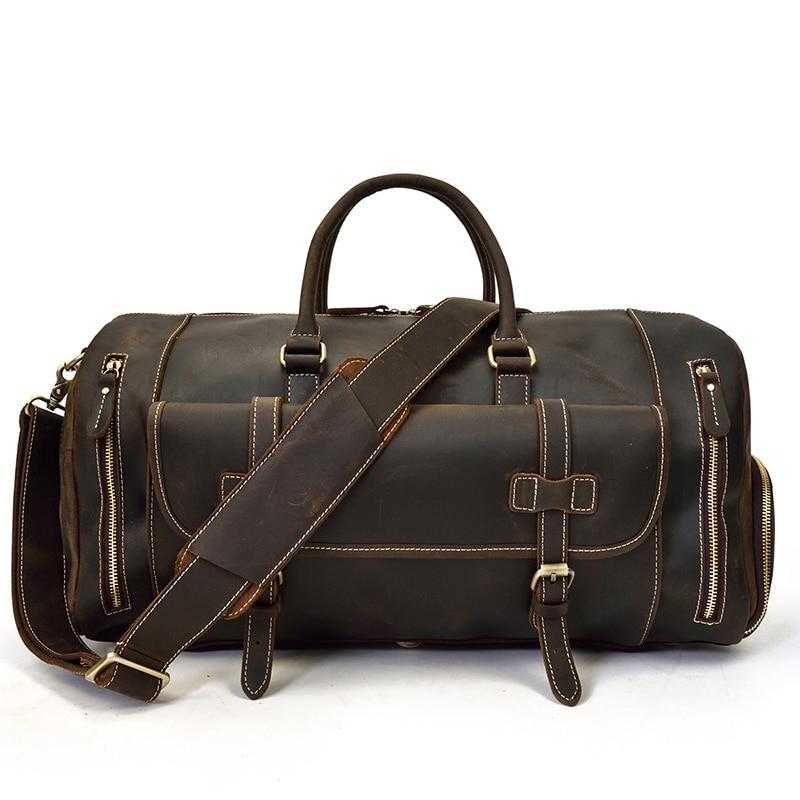
Over time, leather can become stiff if not properly cared for. When this happens, it becomes less comfortable and more prone to cracking, which is something you want to avoid. Read on to learn how to soften the leather. Leather is one of the most stylish and versatile fabrics on the planet. Being made from animal hide and not a synthetic or man-made material, it possesses certain qualities that aren't found elsewhere. Leather is supple, smooth, and has a natural grain that enhances the appearance of the wearer. If you find yourself juggling multiple tasks and need help with your college papers, consider research paper writers online. They are a writing service designed to assist students with their academic needs, allowing them to focus on their passion for leather style and fashion without the stress of deadlines.
It isn't uncommon for certain types of leather to become stiff. This isn’t something that happens overnight, but rather months or even years of usage may stiffen the material to the point where it is no longer comfortable to wear. So, what are you able to do to make the leather softer?
What are the different types of leather and how do they differ in stiffness?
Most people believe that leather originates from cowhide, however, this is not the case. It's not uncommon to see leather made from cowhide, elk, ostrich, and buffalo. When it comes to bovine leather, it's regarded as tough and is mostly utilized for protection, such as motorcycle leather jackets. It is also incredibly delicate and fragile but it just wears out slowly. A wonderful alternative to bovine and calfskin, goatskin blends softness with durability. In addition, goatskin is very water-repellent, which is a very distinctive and important property. Lambskin leather, on the other hand, is the leather most prized by luxury designers and high-end companies. Whether you’re researching different leather types or seeking academic assistance, you can always pay someone to write a research paper to ensure quality insights.
Listed below are the most prevalent hides and their relative softness:
Cowhide is the most common type of leather used in furniture. Because of its strength, it is also the most durable. Due to its heavyweight and toughness, it is not commonly utilized in the fashion sector.
A relatively prevalent form of leather, deerskin is significantly softer than cowhide. There is a lot of room for air between the granules of deerskin, which gives it a smooth feel. One of the distinctive properties of deerskin leather is its capacity to keep you warm when it's cold and cool when it's hot throughout the summer. It is abrasion-resistant and extremely durable, much like other varieties of leather.
The softest form of leather is lambskin leather. The fact that lambskin leather originates from a young animal is the cause of its suppleness. Leather that has a buttery feel. All other leather kinds can't compete with the fine-grained silky feel of this material. This softness makes lambskin leather jackets more susceptible to wear and abrasion, therefore taking excellent care of your lambskin leather jacket is vital for its durability. Ever since the leather industry boomed in the early 1900s, lambskin has been utilized in the manufacture of leather jackets and other clothing.
To better comprehend leather's physical characteristics, it is helpful to know what type of hide is used to make it. As a result, the leather may be categorized into the following groups:
Full Grain Leather: That's because it's full-grain leather, which is derived from a top layer of hide that includes all the grains. It has minimum surface modifications, making it the hardest sort of leather available. For this reason, it is highly sought after by leather aficionados.
Top grain leather: Choosing top-grain leather when purchasing a leather jacket is the finest option. When the skin is split and sanded, it becomes soft and flexible. Afterward, it can be dyed to give it a touch of class. As a result, this sort of leather is extremely strong and durable. As a result, it tends to get longer and longer in the long run as the time passes. Most of the high-end leather items employ this material.
Corrected Grain Leather: It is formed from the skin that is left behind after the top layers have been removed and processed.
Bonded Leather: All of the preceding operations have leftovers that go towards its creation. It's the cheapest and lowest grade leather, and it's not utilized to make clothing.
What makes leather stiff?

It's not only the fact that certain leathers are made better and with higher craftsmanship, which makes them softer but there are several additional reasons why leather might stiffen with time.
Storing Environment
Leather is often thrown in the closet without a second thought as to how it will be preserved. Leather may be damaged by excessive wetness or dryness. Ideally, you should store your leather in a room with a relative humidity of 40 to 50%.
Stretching
Squeezing your body into the leather that doesn't fit well might cause the leather fibers to expand. Stretching your leather might cause it to become less flexible and supple as a result of the stretching.
Using a Dryer
Your leather should never be placed in a dryer. This causes the leather to dry up and lose its soft feel because of the high temperatures used in the dryers. The safest way to dry leather is using a dry washcloth.
Your leather is too Old
Keep your leather in good condition to prolong its life. Leather may last a very long time if it is properly cared for and maintained. This is not always the case, though. Over time, your leather will become less supple as a result of this.
Best Ways To Soften Leather
Your favorite leather item may not be near the end of its lifecycle. Take a look at the leather's condition. You may not be able to save it if it is so stiff that it has begun to break or has cracked all the way through. There are several ways you may transform a piece of leather that's been sitting around collecting dust and grime for a while. You may have to wait a few days to see the full effect, but you should be able to get that item back to being smooth and flexible.
Method 1: Using Natural Oils to Soften Leather
Natural oils are the finest alternative if you don't know how to soften the leather. Use jojoba oil, avocado, or coconut to soften leather items. The leather should be exposed to the sun before using any natural oil. This is particularly important in the summer. Allow the materials to breathe for 10 minutes to allow the pores to open.
- Prepare any of the aforementioned natural oils. You can use skin-softening oils. This means that you should use a non-chemically hydrogenated vegetable or corn oil, as opposed to one that is.
- You can apply the oil to your leather item. You may use a finger dipped in the oil to lightly rub the leather. To achieve the best results, apply multiple layers of oil over the skin. Allow the leather to dry after applying the oil. This will make the leather softer and darker.
- You can repeat the process if you're not happy with the outcomes. Check to see if the oil has been applied evenly to avoid uneven hues. Following the right technique will make your leather garment softer, making it more convenient to wear and less uncomfortable.
If you're unsure of the oil's effects on leather, test it on a small, inconspicuous area first. Small amounts should be massaged in for a time. If it discolors the leather, then don't use it to soften the leather with it on.
Method 2: Softening Leather Using Heat
Because leather goods are manufactured from animal skin, their responses are quite similar to those of our own. In the same way that we moisturize our skin to make it softer, we should do the same thing with our leather backpacks, purses, and wallets. Heat may be used in a variety of ways to soften leather gloves and other clothing, but you must be cautious. Newer goods should not be heated to soften the leather. If the goods are old, the heat can evaporate any leftover moisture, which could lead to further harm to the object in question. Before you utilize heat to soften your leather accessory, use a moisturizer and spread it by rubbing it gently.
1. Using Hair Dryer
The heat from a hairdryer is a typical technique to soften the leather. Turn on your hair dryer on medium heat and run it over the cloth after applying a moisturizer to the leather item. The leather might be damaged by high heat. The distance between the hairdryer and the leather clothing should be around 15 cm. Take it back and forth and don't keep it in one place for too long. These techniques help to brighten and soften the leather surface.
2. Put It in a Dryer
The leather outfit can be dried in a dryer if you need it quickly. After putting the item in the dryer, set the temperature to medium and let it run for 10 to 15 minutes. The leather item may become scorched or shrink if it is exposed to extremely high temperatures or if it is left in the heat for an extended period of time. In this scenario, the leather should either be somewhat moist or completely dry. Leather apparel should not be washed in a washing machine.
3. Leave the Leather Accessory in a Humid, Warm Place
While taking a hot shower, hang the leather garment in the bathroom, or put it beneath your car's windshield to get this effect. For a time, let it sit there. Because direct heat can cause the leather to dry out or fade, you should not keep it out for a lengthy amount of time. As a result, having the attachment in the shower will serve two purposes. In addition to softening, the leather item is soaked in moisture.
Method 3: Using Water to Soften Leather
To soften leather without chemicals, you may just add some water to your leather care routine. Using water to soften leather is as simple as the methods below:
Step 1: Fill Water into a Spray Bottle
It's easy to soften a leather item by moisturizing it. Water should be placed in a spray bottle and the cap should be tightened to prevent any accidents. To avoid mineral build-up and staining that occurs with hard water, you can use distilled water to wash your clothes instead of tap water. A wet towel will suffice in the absence of a spray bottle. Leather that has been waterproofed cannot be softened by water.
Step 2: Spray the Entire Leather Surface
Spritz the leather object from the top to the bottom until the water begins to bead up on the leather item. After some time, moisture will seep into the leather, causing it to lose its firmness. The leather should be worn to let it expand and adapt to your body. Also, you may wear the leather and stand outside in a little drizzle while wearing it. Avoid standing for lengthy periods of time to prevent the leather from becoming soaked. Keep your leather accessory away from excessive moisture, although a little water can have a light aging effect without damaging it.
Step 3: Wipe the Excess Water
Using a clean cloth, remove excess water from the leather with a soft brush. To dry the item naturally, place it in a cool, dry location. It will evaporate the moisture that is left. Too much water will cause it to fade and break, giving the garment a harsh look. Avoid leaving a lot of water on the clothing. You must ensure that all metal components have been dried to avoid them from lustering.
Step 4: Apply Leather Conditioner
Apply a premium leather conditioner after you're done. This will keep the leather hydrated and prevent it from drying out and becoming brittle over time if done correctly.
Method 5: Using Alcohol & Vaseline
These leather oils may not be readily available to you. A leather conditioner is also missing from your arsenal. Now that we've established that, what can you do to give that old, hardened leather object fresh life?
Try putting a liberal amount of rubbing alcohol on a cotton pad that's about the size of a credit card. Dab the pad over the entire leather surface until it begins to shine a little. Just be careful to obtain a uniform shine.
Apply Vaseline to the leather's surface to seal it. Consider adding a second or third layer of leather if you think the leather can absorb additional moisture. So that the alcohol and Vaseline may penetrate the leather and soften it up, let the leather dry overnight before using it.
Method 6: Treating With Leather Conditioner
Soften leather with leather conditioners, which are commercially available products. Using leather conditioners has the advantage of not only softening but also strengthening the leather. When using leather conditioners, you should follow these steps:
Step 1: Buy a Quality Leather Conditioner
Leather conditioners, such as leather honey conditioners or Lexol conditioners, include oils that lubricate the leather, allowing it to flex and bend with your body effortlessly. Other forms of oil create a greasy patina, but leather conditioners don't. They also don't degrade the quality and longevity of the material. Some of these conditioners are sold in a bundle with additional items including leather milk, neatsfoot oil, and wax.
Step 2: Squeeze the Conditioner on a Clean Cloth
Pour a tiny amount of leather conditioner on a clean cloth and apply it to the leather product. The leather should only be treated with a small amount of conditioner. Note that you should not pour the leather conditioner straight into it, since this can cause the leather to crack. It can become difficult to distribute, which could lead to a mess on the floor.
Step 4: Spread the Conditioner on the Leather Surface
Circular or broad strokes are good ways to apply the leather conditioner to your leather. Only a single thin layer should be applied, giving the leather a subtle shine instead. Whenever you're applying conditioner, pay special care to areas like the ankles and toes of a boot or jacket elbows. Avoid using too much conditioner since it will make your hair seem oversaturated and drenched in moisture.
Step 5: Condition the Leather Products Regularly
If you want your leather items to last as long as possible, you should condition them once or twice a year. As you continue to work with the leather, it gets more and more soft and flexible. Those who live in arid areas should condition their leather goods at least once a month to keep them soft.
How to Choose a Proper Leather Conditioner
Using a professional leather conditioner instead of homemade methods can be more effective if handmade remedies do not work. The most difficult part is choosing a leather conditioner that will perform best for your intended use.
In the majority of creams and conditioners, the main component is lanolin. A few people advise against using spray conditioners since many of them contain water as well as inexpensive lubricants in order to keep production costs low.
Alternatively, you might try to make your own combination using natural beeswax and other natural oils. Check out the proper "how-to" lists to learn how to make your own.
Tips for Keeping Leather from Becoming Stiff

When it comes to preventing your leather from getting stiff, there are a number of useful suggestions. With a little common sense and best practices, your leather will remain smooth and supple for a long time to come.
- The importance of quality cannot be understated. Begin by avoiding lower-quality leather items and clothing as much as possible. Invest in a higher-quality leather that is easier to care for and won't deteriorate or dry out as quickly as a lesser-quality leather would do.
- Don't expose yourself too much to the sun. For everything that isn't a plant, it's a good idea to minimize its exposure to light. Prolonged exposure to UV radiation may cause the leather to dry up, fade, and even fracture. When not in use, keep footwear and clothes appropriately.
- Naturally, the air is drier than normal. A tumble-dry cycle is an option, but it's not recommended. For maximum drying time, leave your leather boots at room temperature or outside in the shade if feasible.
- Regular maintenance is required. Keep leather supple and flexible by using conditioners such as mink oil, or olive oil.
- Be sure to pay attention to the tagging and labeling. Following the manufacturer's tag is one of the greatest methods to preserve clothing and other leather items in the best shape. These instructions (and some maintenance) can help your leather products last as long as possible by improving softness and pliability.
Wrapping it up
As leather items get softer, they are less likely to suffer from cracks, rips, and other cosmetic flaws. You should treat and condition leather items the same way you would treat and condition your own skin. There are a number of simple methods for softening hard leather shoes, leather work gloves, and work boots that you may use. To make leather items soft and supple, there are a number of commercially available products that may be used.
Leather can stiffen if it is not properly stored and cared for, however, if this does happen there is still hope for the future. Any of the procedures listed above will restore your leather garment or accessory to its former glory if there is no substantial damage to the garment or accessory. To be clear, some of these procedures and recommendations do not apply to faux leather items, and you should always refer to the manufacturer's instructions on how to care for your leather garments.
FAQs
What Can You Put On Leather To Soften It?
Leather conditioners are the finest way to soften the leather. Use a damp cloth to apply the conditioner to the leather surface. It's also possible to use water and natural oils such as coconut or olive oil, as well as Vaseline. To be on the safe side, I recommend that you invest in a high-quality leather conditioner instead. It's a miracle.
Does Vaseline Soften Leather?
As a leather conditioner, petroleum jelly softens and protects the leather from cracking and drying out. This will work well on leather and patent leather bags, shoes, jackets, and other things, such as leather belts, purses, coats, and leather watch straps. If you are fixing a sofa it is best to get a leather conditioner for a sofa. Rawhide leather, on the other hand, should not be treated with Vaseline. Use a clean, lint-free cloth to apply it. When you don't have shoe polish, this is a great method to soften leather shoes. As well as preventing the leather from splitting, Vaseline will also soften the leather.
What Is The Best Leather Softener?
There are a number of techniques to soften leather, each with its own advantages and disadvantages. The use of professional leather conditioners can make it easier for you. Check the label to make sure that the leather conditioner you choose is non-toxic. Ideally, it should soften the leather and protect it, as well as nurture it for a lengthy period of time.
How Do You Soften Stiff Leather Shoes?
Rub some saddle soap, mink oil, shaving cream, coconut oil, or neatsfoot oil on your shoes with a clean towel to soften them. You should let the shoe soak in the oil for a few minutes. It is possible to reapply if the results do not meet your expectations. If you want to soften your leather shoes, you can use alcohol and Vaseline. Your shoes should be soaked in alcohol for 30 minutes. Later, you may polish the shoe or coat it with a small layer of petroleum jelly, such as Vaseline, to protect it. Leave the shoes overnight and clean them the next morning with a clean towel.
Is Coconut Oil Good For Leather?
Natural oils are a simple method to maintain leather items. When it comes to treating leather, coconut oil is one of the best oils to use. This product should be applied uniformly to the leather surface and stored in a cold, dry area. Before applying the coconut oil, make sure that the leather surface is clean and completely dried. Water or vinegar and coconut oil can be mixed together and rubbed on the leather to create a solution. Your home's leather furniture will benefit the most from the usage of this. Leave the product to dry overnight, and the next day, it will have a stunning shine.
























